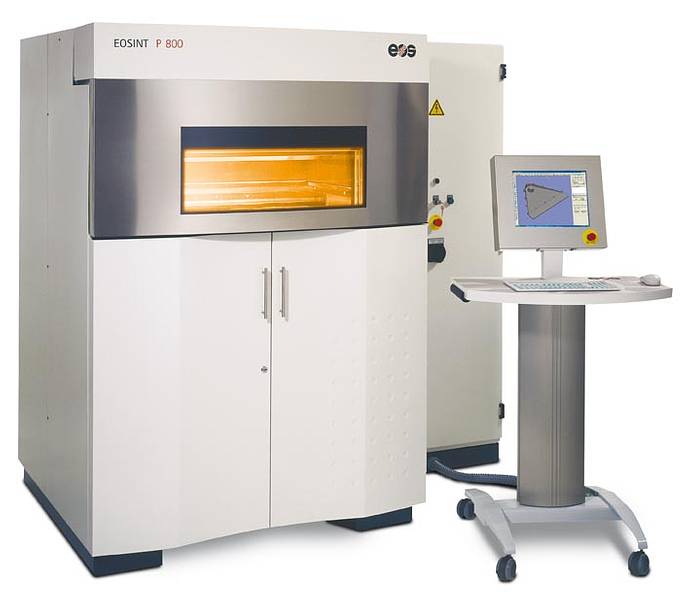High Temperature Laser Sintering Opens Up New Additive Manufacturing Possibilities

The EOS P800 high temperature laser sintering 3D printer. Courtesy of EOS.
Latest News
February 9, 2012
Even if you consider additive manufacturing (AM) an emerging technology (which it isn’t, really), advances are still being made in AM processes. Created by EOS, high temperature laser sintering (HTS) is a relatively new process of AM that is being put to use mainly in the aerospace and medical industries. HTS has been embraced by Paramount Industries and the University of Exeter, among others.
The process uses a CO2 laser that can run at temperatures of 385°C (725°F) to build layers with a thickness of 0.1mm (.004”). The high temperature allows the EOS P800 to sinter high-performance polymers, such as polyether ether ketone (PEEK) and polyaryl ether ketone (PAEK). The result allows for the direct part production of strong, complex plastic parts.
High temperature laser sintering is a 3D printing process that is growing in popularity for making strong plastic production parts. While it is true that aerospace, defense, energy, medical and transportation are natural consumers, there are many more industries that will benefit from this processing and material technology.–Jim Williams, Paramount CEO
The high melting points (around 340°C) and high tensile strength (around 90 Mpa) of PEEK and PAEK make them valuable for parts in pumps and pistons, along with the previously mentioned aerospace and medical fields. Combining the speed of production typical of AM with the strength of PEEK and PAEK makes HTS a potential replacement for standard methods of production for similar parts, which is more expensive and time intensive.
Paramount Industries is working on ways to further increase the versatility of HTS-built parts with the production of carbon-fiber-reinforced PAEKs. According to the company, carbon-reinforced PAEK has a higher tensile strength and is electrostatic dissipative. Paramount has received assistance from the U.S. Air Force Small Business Innovation Research (SBIR) as part of the F-35 Joint Strike Fighter Program.
Below you’ll find a video from Paramount that highlights the materials discussed.
Sources: PRWeb, EOS, Paramount Industries
Subscribe to our FREE magazine, FREE email newsletters or both!
Latest News
About the Author
John NewmanJohn Newman is a Digital Engineering contributor who focuses on 3D printing. Contact him via [email protected] and read his posts on Rapid Ready Technology.
Follow DE






